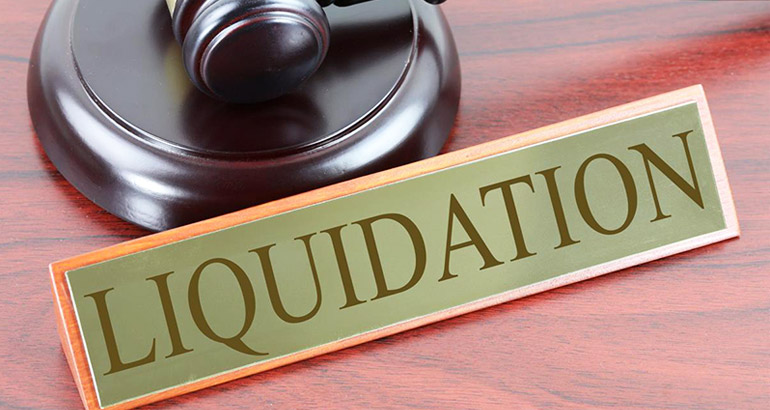Facts About Company Liquidation Revealed
Facts About Company Liquidation Revealed
Blog Article
Not known Incorrect Statements About Company Liquidation
Table of ContentsGetting My Company Liquidation To WorkThe 8-Minute Rule for Company LiquidationAn Unbiased View of Company LiquidationThe 5-Minute Rule for Company LiquidationWhat Does Company Liquidation Do?
A liquidator is specifically designated to supervise the winding up of a business's events in order for it to be folded commonly when the firm is declaring bankruptcy. The liquidator is a neutral 3rd event that looks after the sale of firm properties in order to settle any type of arrearages.Their duty consists of, however is not limited to: Impartial Movie director: A liquidator is entrusted with functioning as a neutral 3rd party to supervise the entire business liquidation process. Create Declaration of Matters: Liquidators should create an extensive statement of events record. This file is distributed to financial institutions, describing the existing economic condition of the business at the time of its liquidation.
After the liquidation of a firm, its presence is removed from Business Residence and it stops to be a legal entity. If supervisors navigated the procedure uncreative, there would certainly be no penalties or individual obligation for strong financial obligations expected. Currently, with a tidy slate, directors can check out new service opportunities, though specialist consultation is recommended.
Company Liquidation Fundamentals Explained
For example, if more than 90% of all business investors agree, liquidation can happen on short notice within seven days, the minimal legal notice for lenders. However, typically, the larger the liquidation and the more properties and capital the company has, the longer the procedure will certainly take. 'Do I have to pay to liquidate my business?', the solution will certainly rely on whether your organization has any assets leftover when liquidating.

We comprehend that no two business are the exact same, which is why we will certainly put in the time to learn more about your organization so we can advise the very best strategy for you. We only operate in your benefits, so you can be entirely certain in the solution we give.
The Ultimate Guide To Company Liquidation
In the UK, there is a set procedure to closing down or reorganizing a restricted company, whether it is solvent or financially troubled. This process is called liquidation and can just be dealt with by a licensed bankruptcy specialist (IP) according to the Bankruptcy Act 1986. There Read More Here are four main sorts of company liquidation procedure: Lenders' Voluntary Liquidation (CVL); Compulsory liquidation; Administration; and Participants' Voluntary Liquidation (MVL).

In these conditions, it is crucial that the company discontinues trading; if business proceeds to trade, the directors might be held personally accountable and it could cause the bankruptcy specialist reporting wrongful trading, referred to as misfeasance, which may lead to lawful action. The directors designate a bankruptcy specialist and as soon as this has been concurred and confirmed, there is a conference with the investors.
Naturally, if there are no shareholders, this action of the procedure is not essential (Company Liquidation). The IP takes control of the business and begins the firm liquidation process. The directors are no longer associated with what takes place, consisting of the sale of the business's possessions. Nonetheless, if the supervisors desire any one of the assets, they can alert the IP.
The smart Trick of Company Liquidation That Nobody is Talking About
The primary difference is that the business's financial institutions put on the court for a winding up order which forces the insolvent firm right into a liquidation process. For the most part, creditors take this activity as a last resource because they have not received payment via other forms of arrangement. The court designates an insolvency expert, likewise called a main receiver, to carry out the compulsory business liquidation procedure.
This type of firm liquidation is not voluntary and supervisors' conduct is reported to the UK's Secretary of State once the liquidation procedure has about his been finished. For that reason, any supervisor that fails to coordinate with the IP or has been involved in supervisor misconduct, or an illegal act, may cause major effects (Company Liquidation).
It is made use of as a way to safeguard the business from any type of lawful action by its creditors. The directors of the business concur to make normal settlements to resolve their financial obligations over a duration of time.
Rumored Buzz on Company Liquidation
This gives the business with time to establish a plan going ahead to rescue the my blog company and stay clear of liquidation. At this factor, supervisors hand control of the business over to the appointed manager. If a business is solvent however the directors and shareholders desire to shut business, a Members Volunteer Liquidation is the right alternative.
The business liquidation process is taken care of by a liquidator selected by the directors and investors of the business and they must authorize an affirmation that there are no lenders remaining. The liquidation procedure for an MVL is similar to that of a CVL because possessions are know but the profits are distributed to the supervisors and the shareholders of the company after the liquidator's charges have been paid.
Report this page